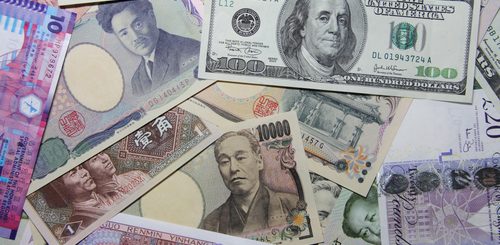History of Currency Notes and Collecting

The decision of man to begin using currency for trading and collecting was based on gold and silver’s greatest weakness: their weight. For thousands of years, precious metals remained supreme and were the medium of exchange in multiple civilizations, and the idea of using currency notes was unheard of. There were a number of reasons why early civilizations didn’t use paper, the most important of which is that it was fragile, difficult to mass produce, and susceptible to fraud. There were a number of historical developments that changed this.
The Arrival Of The Printing Press
The world changed in the 15th century when Johannes Gutenberg introduced his printing press. For the first time, paper could be mass produced, which contributed to greater literacy and the distribution of books. Before the printing press, documents had to be drafted by hand, which by comparison was labor intensive and tedious, which is why books were so expensive. It was the printing press that allowed governments around the world to begin issuing paper money, and one of the first was not in Europe, it was in China.
The Tang Dynasty was one of the earliest to use paper money in the administration of its government and economy, beginning the practice around 1001 to 1100 AD. The Mongol’s incorporated the idea into their expanding empire, and Marco Polo, who visited Asia during the Middle Ages, picked up the idea and brought it back to Europe, where it was adopted. Paper money comes in two forms, which are drafts, which are a type of receipt which represents the value held in an account, and bills, which most of us are familiar with. Bills are issued by governments or other authorities and were basically a promise to redeem at a later date, usually for silver and gold.
Precious metals hadn’t yet fallen out of favor as a medium of exchange in most countries. What happened is that people would take their metals to a bank, and would store it there for safekeeping. The bank would in turn issue a currency note which represented the metals held and which could be redeemed whenever the owner wanted their gold. However, paper money was far more convenient to carry and trade than precious metals due to weight, and the system eventually evolved to where, instead of merely taking the currency notes back to the bank to redeem them for gold or silver, the owner would just trade the notes directly for goods and services, as it represented metals that were held in a vault.
How Currency Collecting Emerged
Currency collecting is a natural evolution of paper money. Once governments and private institutions begin issuing their own currency, they would incorporate various distinct, artistic designs which were one of a kind. Over time, most notes would be destroyed or taken out of circulation, but a few would survive, which hold value due to scarcity and the laws of supply and demand. Put another way, people collect currency for the same reason they collect rare artwork. While paper money has no true intrinsic value compared to silver and gold, it can have an artistic and collector’s value.


